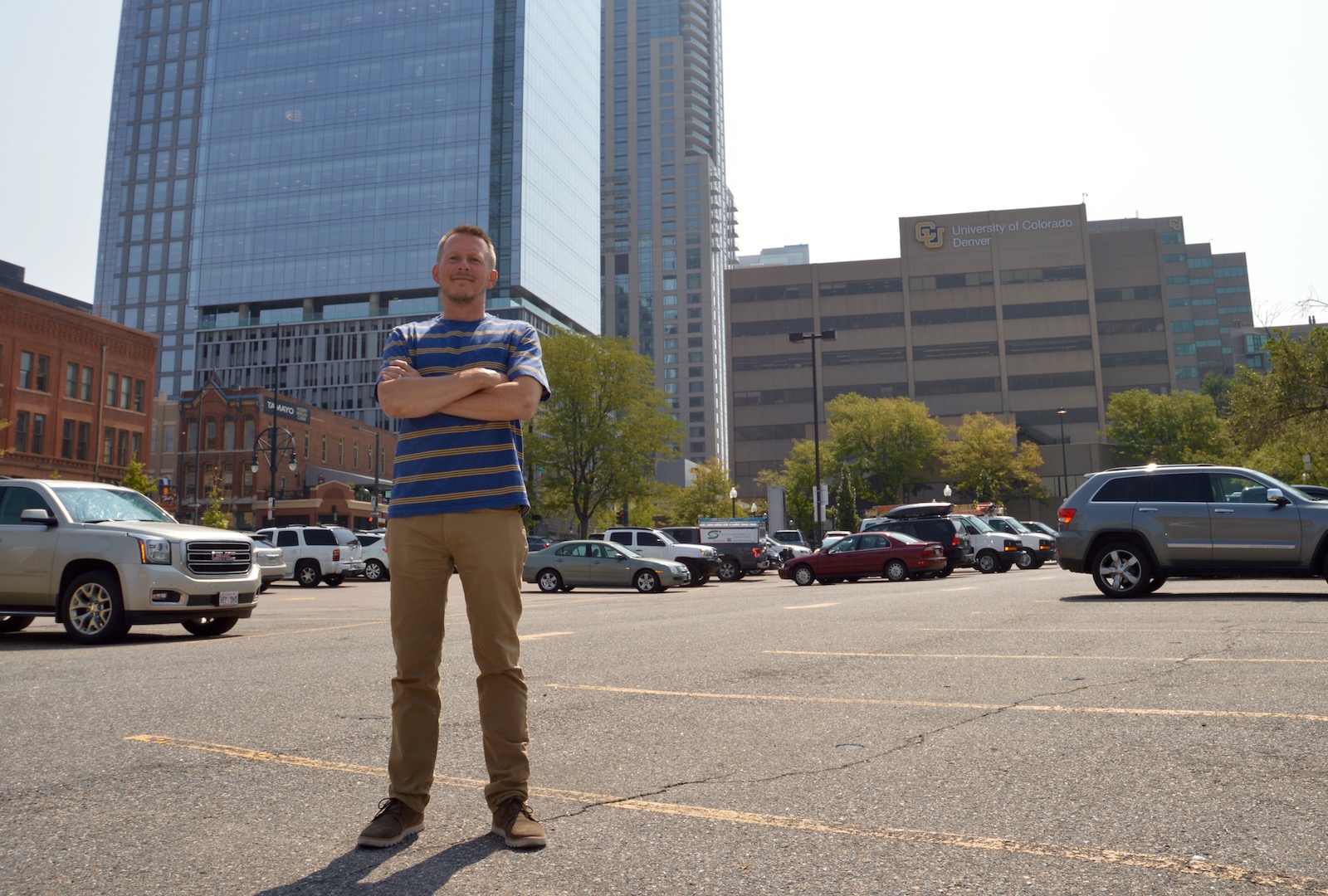The Local newsletter is your free, daily guide to life in Colorado. For locals, by locals.
If there’s one thing more ubiquitous than the cranes looming over Denver’s skyline, it’s the constant conversation among locals about Denver’s growth. From new high-rises dotting downtown to residential buildings popping up in Denver’s neighborhoods, it can be close to impossible to keep up with a city that appears to be perpetually under construction.
That’s where Ken Schroeppel comes in. The assistant professor in the Urban and Regional Planning Department at the University of Colorado Denver launched the Denver Infill blog in 2005 as a place to document and discuss Denver’s growth. Since then, the site has become a destination for updates on completed and ongoing construction projects.

“I thought, ‘There ought to be a place where you could go to find all the information on the projects that are going on in the downtown area in one place,’” Schroeppel says.
While there are plenty of topics worth complaining about when it comes to the Mile High City’s booming development, one in particular irks Schroeppel and his colleagues to the point that it’s mentioned on the site’s About Us page: “We loathe surface parking lots and seek their eradication from Denver’s urban core!”
Indeed, Schroeppel has strong feelings about what makes for an inviting downtown environment, and parking lots are not part of that picture. “Parking lots are simply antithetical to good urbanism,” Schroeppel says. “With every infill project that takes out a parking lot, it brings us one step closer to having a better downtown for the pedestrian and a better downtown altogether.”
According to Schroeppel, there’s a reason that people love to visit cities like New York, Paris, and Barcelona—because they’re easy to explore on foot. The world’s greatest cities are designed around pedestrians, not cars. “We have [plenty] of cities around the world that are hugely successful economically and you can’t find a single parking lot anywhere,” he says.
Much of Denver’s development happened after the advent of the automobile, which for decades ruled how the city was built. Now, an increased desire for urban living has turned developers’ attention back to pedestrian-friendly designs. Dozens of parking lots in the downtown area have already been transformed into mixed-use complexes with residential, commercial, and retail spaces occupying the same building. And more are on the horizon.
Just recently, multiple projects have been proposed that would replace some of downtown’s more unsightly lots with mixed-use developments. One such proposal is planned just south of Coors Field, where an entire city block of surface lots will be scrapped in favor of two towers housing condos, a hotel, offices, shops, and the Rockies hall of fame.
An even larger project is under consideration for the areas surrounding the Pepsi Center and Elitch Gardens. Alongside the city, developer Revesco Properties has proposed the River Mile, a visionary plan to create a new downtown neighborhood, complete with schools, housing, offices, and retail and restaurant space, with a focus on supporting walkability and multi-modal transportation.
Schroeppel praised the River Mile project for its multi-use design and access to pedestrian-oriented transportation. He said the parking lots they replace shouldn’t be missed. “Surface parking is one of the most inefficient and underutilized land uses when confined in a downtown area,” Schroeppel says. “And to continue that without question… it’s baffling to me why anyone would think that’s a good thing to do.”
While an undertaking of this scale will take decades—Rhys Duggan, president and CEO of Revesco, said at the Downtown Denver Partnership’s September forum this week that they hope to begin the project in 2020—some locals have expressed concerns that reduced parking options will make the area a less desirable destination for suburbanites.
But Schroeppel brushes off that assertion. “The whole argument that nobody will go there if they can’t drive and park their car is absurd,” he says. “It’s about providing more options that are truly competitive to the automobile.”
While RTD’s light-rail network already provides a large portion of the suburbs easy access to downtown, Schroeppel says Denver would be well served by a two-tiered arrangement that allows quicker intracity travel. Schroeppel says many people living in dense neighborhoods have too few options for public transport, essentially forcing them to spend money purchasing, maintaining, and parking a car. “We cannot continue to grow and have everybody drive cars. It just doesn’t work,” he says.
Schroeppel cited the Colfax Corridor Connections project— a bus rapid transit (BRT) system planned for Colfax Avenue—as a move in the right direction. The proposal calls for increasing bus service along the road and giving buses dedicated lanes and traffic signals to allow them to quickly drive along the route.
While a relatively new city, Schroeppel says Denver is in a better position for pedestrian-centered growth than some other sprawl-prone Western American metropolises like Phoenix. Schroeppel explained that Denver has “good urban bones” from the pre-automobile era. “We’re a great city already. But we can become an even greater city by returning to even our roots as a young city, comparatively speaking,” he says.
And as for the eradication of parking lots? Schroeppel says he’s looking forward to Denver once again being organized around people instead of machines.
“I’m excited about that future,” he says.








